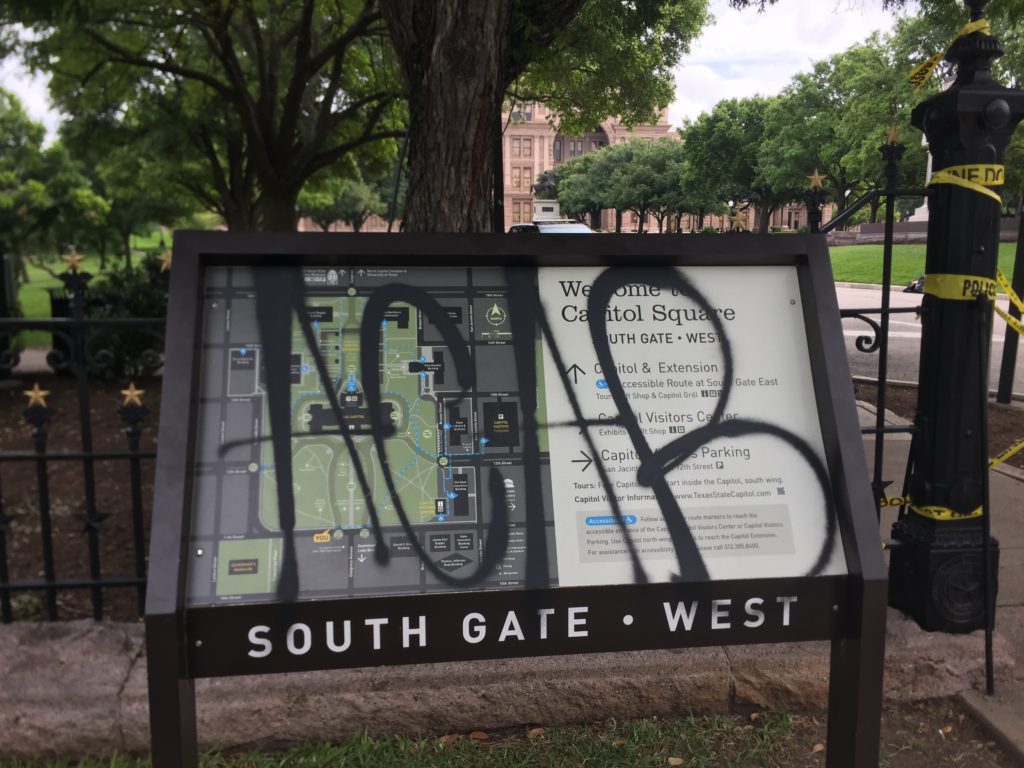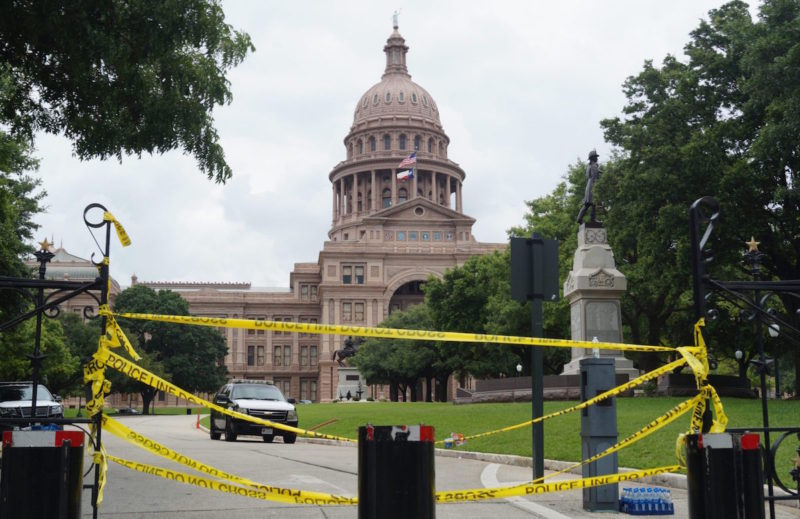The Texas Capitol grounds have been closed to protesters for nearly a week, raising questions about when the popular gathering spot will reopen.
Texans have a right under the state constitution to “peaceable” assembly. Customarily, courts interpret that to include assembly at public civic spaces like the Capitol grounds.
But last Saturday, May 30, protesters knocked over an historic fountain and sprayed graffiti on stonework in parts of the Capitol complex. After that, troopers from the Department of Public Safety sealed off the complex to the public.
According to Chris Perri, an Austin attorney who has offered free legal assistance to protesters, “It’s pretty common that whenever an organization that’s responsible for the security of a grounds finds that it’s a security risk, they can close it even if it’s a public space. A temporary closure isn’t considered a violation of freedom of assembly.”
However, law enforcement are required to reopen a public space for peaceable assembly “once that obstruction or security issue goes away.”
Perri thinks the closure of the Capitol grounds is “questionable,” but he doesn’t expect a legal challenge would go very far in the courts. Judges, he said, rely on a broad standard of “reasonableness” that’s deferential to authorities.
“Reasonableness is always the touchstone of all of these legal rulings.” A closure could only be found to be illegal “if they didn’t have an articulable basis for closing it in the first place, or if the closure lasted longer than the situation that was causing the closure.”
Asked for an explanation for the closure of the Capitol grounds, the Media and Communications Office of the Texas Department of Public Safety did not respond specifically, saying, “We do not discuss specifics related to operational security measures.”
The Department added in an email, “We will continue to work diligently to meet our responsibility to protect public property, as well as our responsibility to assure the right of people to peacefully assemble and protest.”

“Decisions regarding security of the Capitol and Capitol Grounds will remain flexible and will respond to actual circumstances in a reasonable manner. We are committed to working with our law enforcement partners across the state to proactively protect the citizens of Texas.”
The Department also would not comment on the legal basis for the closure. On Friday there were reports of heavy DPS presence in parts of Austin as officers prepared for another night of protests, the eighth in a row.
Where’s the Line Between ‘Protest’ and ‘Riot’?
In Texas law, there is a distinction between a peaceable assembly and a riot. Law enforcement can charge people who participate in a riot with a Class B misdemeanor, or a higher offense if others in the riot were charged with higher crimes.
The Penal Code defines a “riot” as an assembly of at least seven people that “creates an immediate danger of damage to property or injury to persons,” or substantially obstructs law enforcement functions, or “by force threat of force, or physical action deprives any person of a legal right…”
“This is a pretty loose definition, obviously,” said Perry, the attorney. He worries about an over-broad application of force under this statute. “If seven or more people are out there spray-painting something, is that a riot? I think that might be vandalism or criminal mischief.”
“The problem is when you call something a riot then the police have certain procedures that they can then use to response to that riot. We have to be careful what we call a riot. Because you wouldn’t want the police shooting people just because some people are spray-painting buildings but not actually causing any danger to people.”
“You would probably want your response to be a little more peaceful.”
